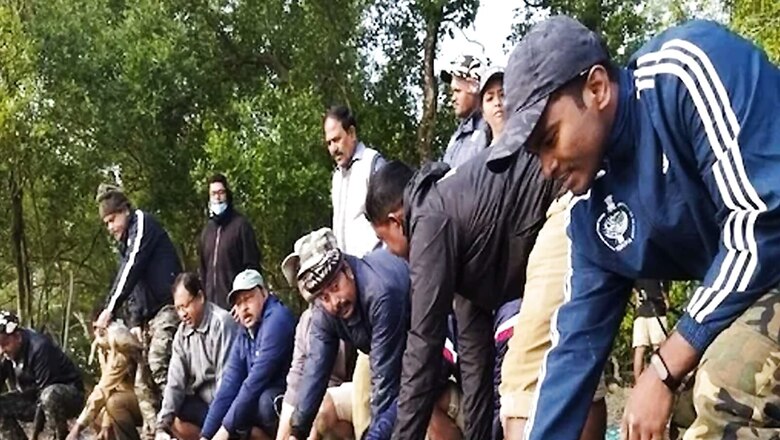
views
To track the movement of endangered species of a tortoise called Batagur Baska or Pora Katha, a GPS transmitter device has been attached to 10 of them before they were released on Wednesday in the Sundarbans River. These tortoises — six females and three males — capable of breeding, were released into the Sundarbans River.
GPS transmitters have been installed on the bodies of ten turtles to monitor their nature and movement. As a result, more information is expected to be available about this nearly extinct species. The initiative comes under the Sundarbans Tiger Project, which plans to monitor the movements of these endangered species to gather information on their reproduction, and how they adapt to the environment.
According to the Forest Department, this particular type of tortoise once inhabited the Sundarbans, as well as the coast of Malaysia via Myanmar and Thailand. But now the species is on the verge of extinction and has been listed as Endangered Species.
Several years ago, in 1995-96, the Forest Department collected olive ridley or sea Katha tortoise eggs on the beach and hatched them. But among those newborn turtles, the forest department found the Batagur Baska species. Since then, the Sundarbans Tiger Project has started conservation of this species. The Tiger Project has been conserving and breeding this tortoise for several years by constructing a separate pond at Sajnekhali in the Sundarbans.
Breeding from just 12 tortoises, the Tiger Project now has 360 Batagur Baska species of tortoises. However, with the reproduction, the forest department has made arrangements for their conservation and breeding in areas of Sajnekhali, Dobanki, and Harikhali.
Read all the Latest India News here



















Comments
0 comment